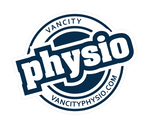Groin pain is a common sports injury, particularly in athletes whose sports require acute cutting, pivoting, explosive turns, changes in direction, rapid acceleration/deceleration or kicking (such as soccer, football, or ice hockey).
Within soccer and hockey, groin pain accounts for >10% of injuries.
Acutely, groin injuries can result in a number of weeks off sport. If left untreated, this can turn into a more chronic issue, known as longstanding groin pain. This can lead to an extended period of time with a restricted training regime, and little game time, so it’s important to understand your groin injury and recovery plan.
Understanding The Anatomy
Due to the complex anatomy and nature of groin pain – we can divide it into 4 key clinical entities:
- Adductor related
- Iliopsoas-related
- Inguinal-related
- Pubic-related
These clinical entities differentiate key areas of concern in groin-related pain, however there is often a crossover in terms of the affected area and contributing factors to groin-related pain.
Risks
- Quick increased in training volume/intensity without appropriate recovery time
- Weakness of the lower limb muscles – in particular the abductors and rectus abdominis
- Poor core & pelvic control
- Poor flexibility through the abductors
- Inadequate warm up
- Previous injury
- Fatigue/poor muscle conditioning
- Amateur level of experience
Assessment
Reviewing with a physiotherapist is essential to gain a thorough history and perform a physical examination, particularly to exclude other pathologies that may be referring to the groin, or pathologies that would change the treatment plan.
Typically an assessment will involve tests of range of motion, muscle length, muscle strength, and special tests to aid in diagnosis. For the less irritable, functional assessment and a variety of strength tests are used to identify asymmetries/weaknesses that may be contributing to the athletes groin pain.
Management
- Acute/Sub acute Phase
This phase involves reloading & managing inflammation, to assist tissue regeneration. Within this phase, physiotherapy will guide gentle flexibility training alongside prescribing isometric exercises to reduce the amount of muscular inhibition.
- Conditioning Phase (Muscle Activation & Strength)
The conditioning phase continues to focus on tissue regeneration, through gradually loading the key muscles involved in groin related injuries – the hip adductors, hip flexors, and abdominal muscles.
Physio rehab programs should include a combination of types of muscular contractions (isometric/concentric/eccentric) as well as at varying degrees of range of motion.
An ideal program would involve 3 x days of strength training with a rest day in between, following a general rule to not exceed >3/10 pain rating.
- Sports Specific Phase
The sports specific phase commences when there is absence of pain on clinical tests, alongside range of motion and strength being at least 80% and 60% respectively compared to the uninjured limb.
The primary goal of this phase is to restore musculotendinous endurance and strength, aerobic and anaerobic capacity, and neuromuscular control/balance/coordination. A combination of strength exercises (slow heavy concentric, isometric and eccentric exercises) and a running/kicking program make up this phase.
- Return to Sport Phase
Key criteria to move to the return to sport phase include equal range of motion compared to the non-injured side, at least 80% strength compared to the uninjured limb, as well as high level exercises (e.g. level 3 Copenhagen) being performed without any compensation.
Return to sport should be guided by a physiotherapist to provide a gradual return to training over a number of weeks (dependent on type/grade of injury and amount of time off training), and the athlete should participate in 1-3 weeks of full training before full return to sport.
Want To Know More? Contact us!
Book a consultation today: https://vancityphysio.janeapp.com/
Follow us on Instagram for more information: VanCity Physio (@vancityphysiotherapy)


